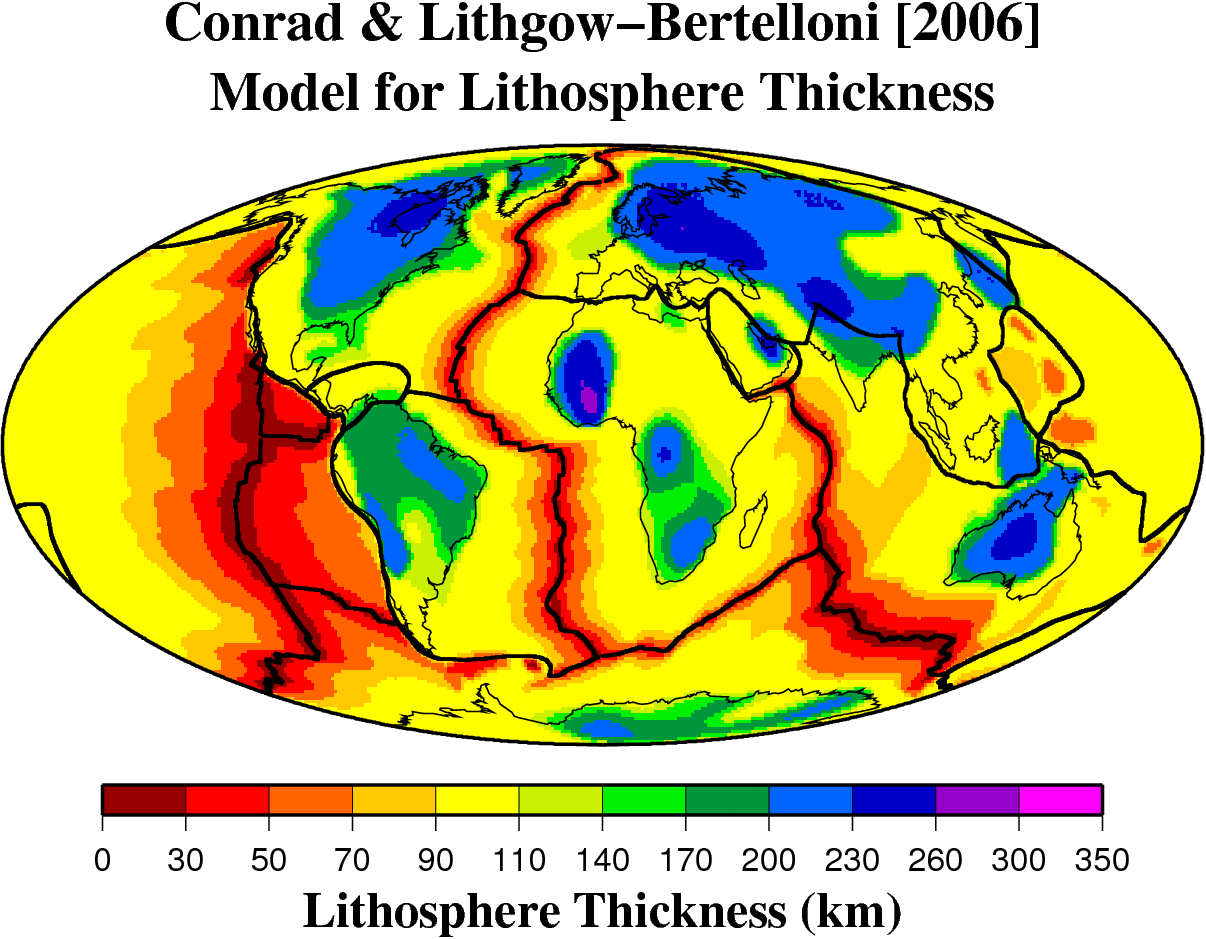Lithosphere
Thickness Variations

The Conrad and Lithgow-Bertelloni [2006] model for
lithosphere thickness characterizes lateral variations in lithosphere thickness
across the surface of the earth (see above figure). Oceanic lithosphere is
assigned a thickness proportional to the square root of its age (ages are taken
from Muller et al., [1997]). For continental areas, characteristic thickness is
determined following the method of Gung et al. [2003], who employ
the maximum depth for which the seismic velocity anomaly (as determined using Ritsema
et al.'s [2004] seismic tomography model S20RTSb) is consistently greater
than +2%. Here we imposed 100 km as the minimum continental and maximum oceanic
characteristic thickness. Remember that material properties such as viscosity
vary continuously throughout the depth of the lithosphere, so the definition of
“thickness” may vary. The Conrad and Lithgow-Bertelloni [2006] model does
not assume any particular definition, but instead characterizes lateral
variations in layer thickness (see Conrad and Lithogow-Bertelloni [2006]).
Model: The Conrad and
Lithgow-Bertelloni [2006] model for lithosphere thickness can be downloaded here.
Format: Longitude (deg), Latitude (deg), Thickness (km)
Citation: Please cite the
following paper when using this model:
Conrad, C.P., and C. Lithgow-Bertelloni (2006), Influence of continental roots and asthenosphere on plate-mantle coupling, Geophysical Research Letters, 33, L05312, doi:10.1029/2005GL025621.
[online version]
[reprint]
References listed above:
Gung, Y., M. Panning, and B.
Romanowicz, Global anisotropy and the of continents, Nature, 422, 707-711, 2003.
Muller, R.D., W.R. Roest, J.-Y. Royer,
L.M. Gahagan, and J.G. Sclater, Digital isochrons of the world’s ocean floor, J. Geophys. Res., 102, 3211-3214, 1997.
Ritsema, J., H.J. van Heijst, and
J.H. Woodhouse, Global transition zone tomography, J. Geophys. Res., 109, B02302, doi:10.1029/2003JB002610,
2004.